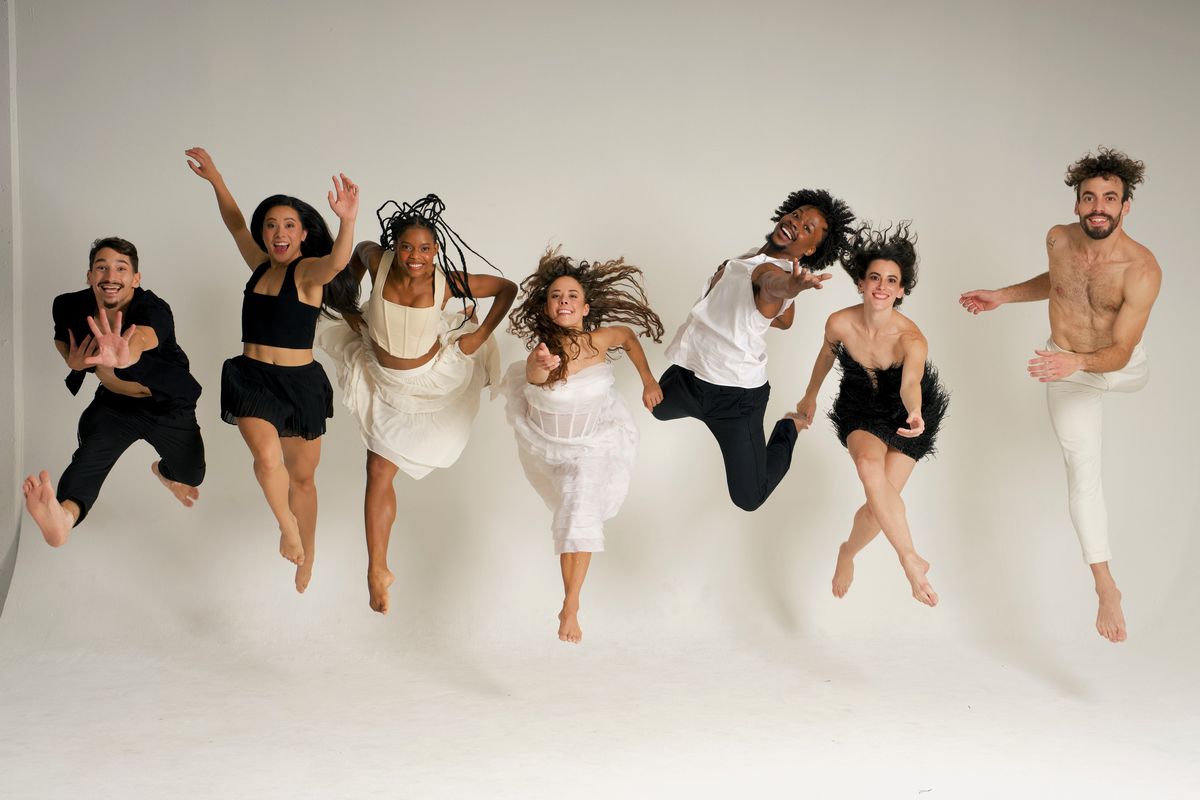BODYTRAFFIC ready to ‘get the world moving’ at Myrtle Woldson Performing Arts Center

In a roundabout way, skipping a day of dance class as a child was the best decision choreographer Trey McIntyre made for his career.
Having gotten into dance classes so he could be a better musical theater performer, McIntyre, then 12, found early dance training to be square and boring. Hence, his skipping classes.
One day, McIntyre was showing his friends some steps he created outside of the dance studio. The teacher he was supposed to be working with saw this and, instead of scolding him for missing class, suggested he teach his choreography to the rest of the students.
“It felt very natural,” McIntyre recalled. “I didn’t have any trepidation about it. I felt like I knew how to communicate movement to people … That little bit of creative teaching really set me on a path and taking me seriously in a place like that was really moving and made it a possibility, so I really have her to thank.”
McIntyre eventually left his native Kansas for the North Carolina School of the Arts and the Houston Ballet Academy. In 1989, he was named choreographic apprentice to the Houston Ballet, a position which the company created just for McIntyre. In 1995, he was named the company’s choreographic associate.
In his more than 30 years as a freelance choreographer, McIntyre has created more than 100 pieces. Los Angeles-based dance company BODYTRAFFIC will perform one of those pieces, “Blue Until June,” along with pieces from three other choreographers on Saturday at the Myrtle Woldson Performing Arts Center.
BODYTRAFFIC was founded by Artistic Director Tina Finkelman in 2007. As per the company’s website, BODYTRAFFIC’s mission involves “championing contemporary dance, educating audiences and inciting positive change. Its goal is simple: Get the world moving.”
McIntyre became involved with the company for the first time years ago while BODYTRAFFIC was part of a development project for Walt Disney theme parks. McIntyre was brought in to help with the show and became fast friends with Finkelman.
Several years later, Finkelman visited McIntyre while he was staging “Blue Until June” for a company in Nevada and asked if the piece would be appropriate for BODYTRAFFIC. McIntyre said, because the piece is choreographed for limited pointe shoes, it would be a strong match for BODYTRAFFIC, which doesn’t often dance en pointe.
“They’re so unique in the field of dance,” McIntyre said. “The shows are so incredibly entertaining and moving, also quite meaningful, and it’s such a special group of dancers. The people they are is a huge part of their hiring.
“Tina’s meticulous in making sure she’s getting a culture that produces the kind of art that they do, so in that way, they’re incredibly unique.”
“Blue Until June” came from a commission by the Washington Ballet to create a piece set to music by Etta James. McIntyre sees the piece, which premiered in October 2000, as an examination of relationships and how popular music influences what people think romantic love is meant to be.
McIntyre said working with the piece so many years after its premiere can feel like working with a historical text at times.
“I’m explaining to a new person who sees the world differently to approach a movement that essentially needs to say the same thing,” he said. “How do I do that without pushing them into a box and finding those elements in this individual? It’s a thrill for me.”
Typically, a dancer from the original production would travel to Los Angeles to teach “Blue Until June” to the BODYTRAFFIC dancers. Because of the timeframe they were working with though, the dancers learned the choreography by watching a video of a performance before McIntyre arrived in person.
“We get to spend a lot of time clarifying, drawing out some of the nuances,” he said.
The next time BODYTRAFFIC performs in Spokane, they could have another McIntyre piece on the program, as he is working on a piece set to the music of Buddy Holly for the company. McIntyre recently traveled to Lubbock, Texas, the singer’s hometown, and was touched by Holly’s short life.
In 1959, singers Holly, Ritchie Valens and J.P. Richardson, aka the Big Bopper, and pilot Roger Peterson, died in a plane crash, dubbed the “Day the Music Died” by singer Don McLean.
McIntyre said this Holly piece is the best thing he’s ever made.
Along with “Blue Until June,” BODYTRAFFIC’s performance features Alejandro Cerrudo’s “Pacopepepluto,” which consists of three solos for male dancers set to the music of Dean Martin. On its website, BODYTRAFFIC writes that this piece shows Cerrudo’s “skill at balancing aesthetic austerity and sharp wit” while encouraging viewers to embrace their own self-expression. The piece is performed in dim lighting and contains partial nudity with male dancers in dance belts.
BODYTRAFFIC’s 2022-23 artist in residence Micaela Taylor choreographed “Snap,” which is set to the music of James Brown. The company writes that the piece is inspired by the “ethnically diverse yet isolating crowds of Los Angeles” and “urges audiences to ‘snap out of’ social pressures to conform and to connect with their individuality as well as with people around them.”
Finally, BODYTRAFFIC will perform Matthew Neenan’s “A Million Voices,” which was inspired by singer Peggy Lee.
“Her legendary music, which was created in response to the political climate of her time, spurs us to embrace the passion of living even in the darkest of times,” the company wrote.
“All the work on the program is so diverse and so interesting,” McIntyre said. “It’s a really beautifully curated program. I was going to say there’s something for everyone, but I feel like everything on the program is for everyone.”